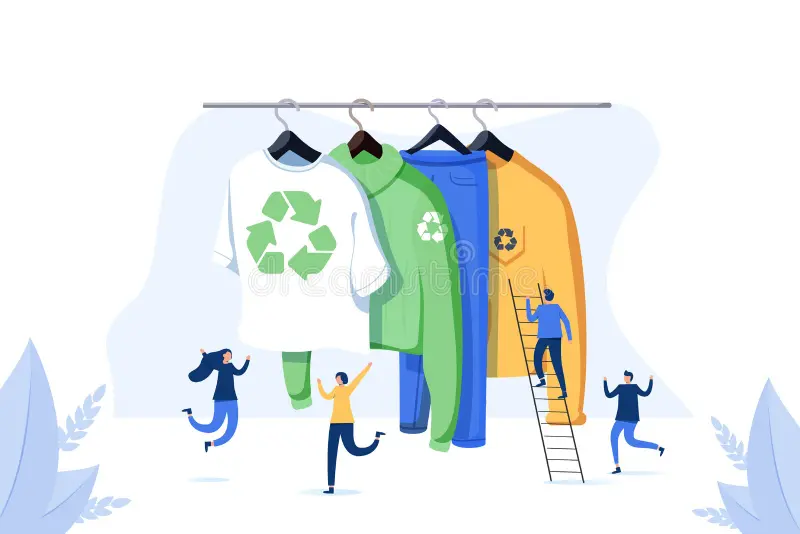As awareness of environmental and ethical issues in fashion grows, more women are turning to sustainable and ethical clothing choices. Fast fashion has contributed to pollution, waste, and poor labor conditions, but sustainable fashion offers an alternative that’s stylish, responsible, and better for the planet.
This guide explores the importance of sustainable fashion, how to build an eco-friendly wardrobe, and the best ethical clothing brands for women.
🌿 1. Why Sustainable Fashion Matters
Fast fashion relies on mass production, which leads to:
🚫 Excessive waste (millions of tons of discarded clothing yearly)
🚫 Water pollution (dyes and chemicals harming water sources)
🚫 Poor labor conditions (underpaid workers in unsafe environments)
Sustainable fashion focuses on:
✔️ Ethical production (fair wages & safe working conditions)
✔️ Eco-friendly materials (organic cotton, hemp, recycled fabrics)
✔️ Less waste (slow fashion, minimalism, upcycling)
👗 2. How to Build an Eco-Friendly Wardrobe
Creating a sustainable wardrobe doesn’t mean throwing away all your clothes! It’s about making thoughtful choices and investing in long-lasting pieces.
A. Choose Quality Over Quantity
🔹 Buy timeless, versatile items instead of fast trends.
🔹 Opt for natural fabrics like organic cotton, linen, and wool.
🔹 Look for durable stitching and ethical certifications (GOTS, Fair Trade).
B. Shop Second-Hand & Thrift
🛍️ Thrifting and vintage shopping reduce waste and give clothes a second life.
🔹 Check out online thrift stores like ThredUp, Poshmark, or Depop.
🔹 Visit local thrift shops or clothing swaps for unique finds.
C. Support Ethical Brands
🔹 Choose brands that prioritize sustainability, fair wages, and responsible sourcing.
🔹 Look for certifications like Fair Trade, OEKO-TEX, and B Corp.
♻️ 3. Best Sustainable Fabrics & Materials
Not all fabrics are created equal! Some are eco-friendly, while others harm the planet.
Eco-Friendly Fabrics:
✔️ Organic Cotton – Grown without pesticides, biodegradable.
✔️ Hemp – Uses less water, durable, naturally resistant to pests.
✔️ Tencel (Lyocell) – Made from wood pulp, biodegradable, soft.
✔️ Recycled Fabrics – Made from old garments or plastic waste (e.g., recycled polyester).
Fabrics to Avoid:
🚫 Polyester & Nylon – Made from petroleum, sheds microplastics.
🚫 Acrylic – Non-biodegradable and heavily polluting.
🚫 Conventional Cotton – Uses high amounts of water and pesticides.
🛒 4. Best Sustainable Clothing Brands for Women
Here are some top brands making a difference:
Affordable Sustainable Brands:
✔️ Pact – Organic cotton essentials at budget-friendly prices.
✔️ Kotn – Ethically made, high-quality cotton basics.
✔️ Girlfriend Collective – Stylish activewear from recycled materials.
Luxury & Designer Ethical Brands:
✔️ Stella McCartney – High-end, sustainable luxury fashion.
✔️ Reformation – Trendy yet eco-friendly women’s clothing.
✔️ Eileen Fisher – Minimalist, timeless, and ethically made pieces.
Sustainable Footwear & Accessories:
✔️ Allbirds – Eco-friendly sneakers made from wool and sugarcane.
✔️ Veja – Stylish, sustainable sneakers with fair trade rubber.
✔️ Matt & Nat – Vegan leather handbags and accessories.
🔄 5. Simple Ways to Make Your Wardrobe More Sustainable
Even small changes can have a big impact! Try these tips:
✔️ Buy Less, Choose Well – Focus on quality instead of quantity.
✔️ Repair & Upcycle – Fix old clothes instead of tossing them.
✔️ Wash Clothes Sustainably – Use cold water and air-dry when possible.
✔️ Donate or Sell Unwanted Clothing – Give clothes a second life.
✔️ Rent or Swap Outfits – Use rental services for special occasions instead of buying new.
🌎 Final Thoughts
Sustainable fashion isn’t just a trend—it’s a movement toward a better future. By choosing eco-friendly fabrics, ethical brands, and mindful shopping habits, you can make a difference while still looking stylish.

